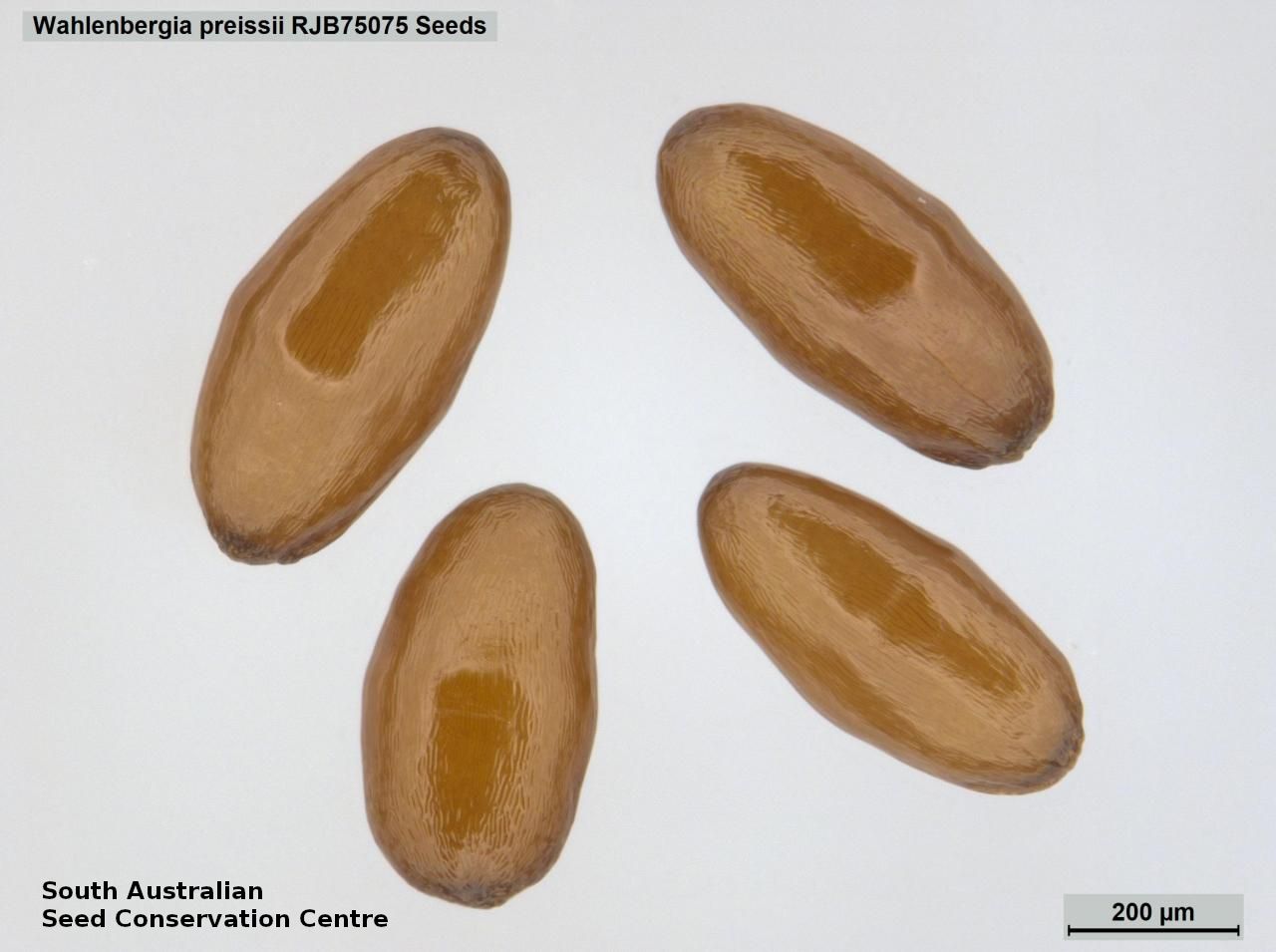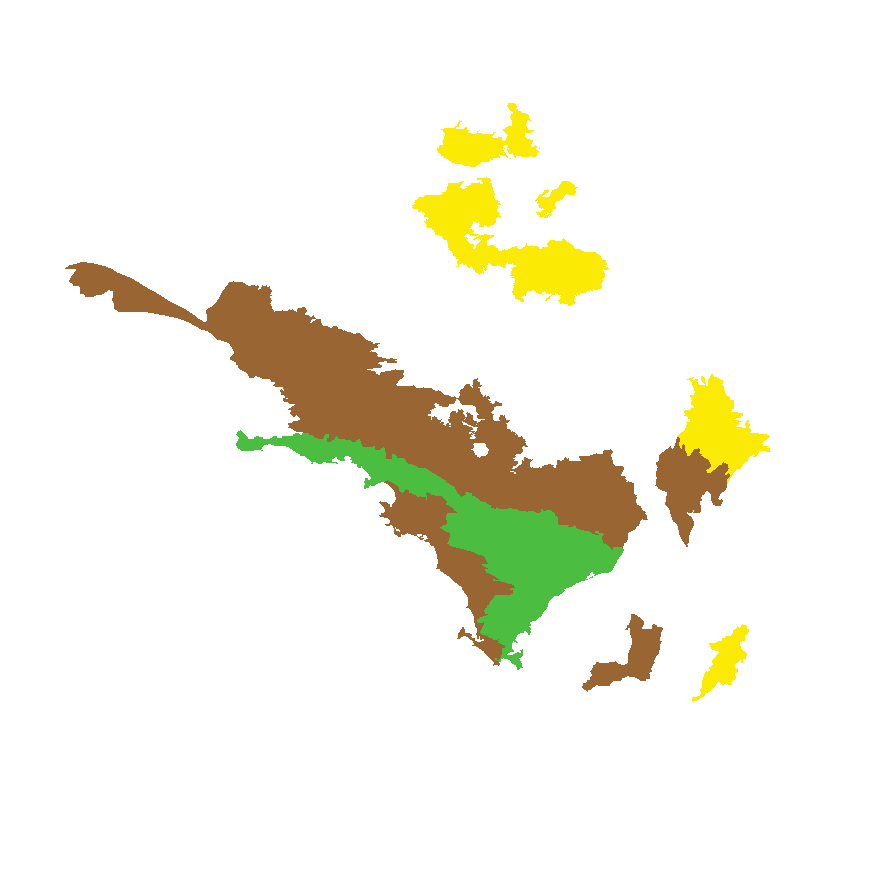


Botanical art
Etymology
Wahlenbergia named by H.A Schrader in honour of Georg Göran Wahlenberg (1780-1851), a Swedish professor of botany. Preissii named after Johann August Ludwig Preiss (1811-1883), a German-born British botanist and zoologist, who collected plants extensively in Western Australia.
Distribution and status
Found on Eyre Peninsula and in the southern Mount Lofty Ranges in South Australia, growing in open sites in a variety of vegetation types. Also found in Western Australia. Uncommon in South Australia. Common in Western Australia.
Herbarium regions: Eyre Peninsula, Southern Lofty, Green Adelaide
NRM regions: Adelaide and Mount Lofty Ranges, Eyre Peninsula
AVH map: SA distribution map (external link)
Plant description
Annual herb with a single or few-stems to 40 cm high, upper parts glabrous, lower parts hairy. Leaves opposite, becoming alternate up the stem, to 30 mm long and 6 mm wide, obovate, becoming linear up the stem, margins flat or sometimes undulate. Flowers terminal, blue or sometimes white, funnel-shaped with 5 narrowly oblong lobes. Flowering between August and November. Fruits are brown elongated cone capsule to 7 mm long. Seeds are tiny light brown elliptic seed to 0.6 mm long and 0.3 mm wide. Seed embryo type is spatulate under-developed.
Seed collection and propagation
Collect seeds between October and December. Collect capsules that are maturing, drying and turning brown with hard seeds inside. Place the capsules in a tray and leave to dry for a week. Then rub the capsules gently with your hands to dislodge the seeds. Use a sieve to separate the unwanted material. Be careful as the seeds are very small. Store the seeds with a desiccant such as dried silica beads or dry rice, in an air tight container in a cool and dry place. From one collection, the seed viability was high, at 95%.
| Location | No. of seeds (weight grams) | Number of plants | Date collected | Collection number Collection location | Date stored | % Viability | Storage temperature |
|---|---|---|---|---|---|---|---|
| BGA MSB | 24,400 (0.48 g) 24,400 (0.48 g) | 50 | 16-Nov-2007 | RJB75075 Southern Lofty | 19-Sep-2008 | 95% | -18°C |
Number of plants: This is the number of plants from which the seeds were collected.
Collection location: The Herbarium of South Australia's region name.
% Viability: Percentage of filled healthy seeds determined by a cut test or x-ray.